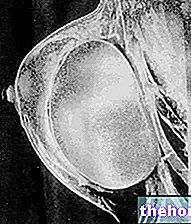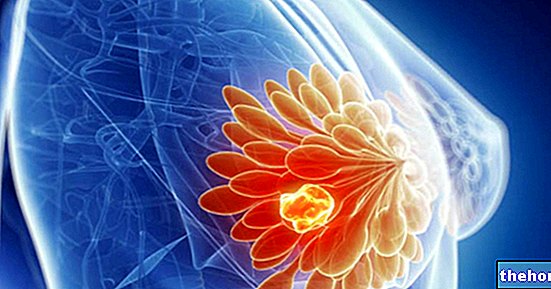Generality
The fallopian tubes - also known as salpingi, uterine tubes or uterine trumpets - are two hollow organs belonging to the female genital system. Tubular in shape, they are about 7-8 cm long, with a diameter ranging from 1 to 2mm.
Each fallopian tube is fixed with one end to the sides of the upper part of the uterus, while the opposite end is placed in close proximity to the ovary, wrapping it from the top like a funnel.
The term fallopian tube derives from Gabriele Falloppio, a botanist and anatomist of the sixteenth century who was the first to describe its exact structure.
.jpg)
FUNCTIONS OF THE FALLOPIUM TUBES
The purpose of the uterine tubes is to collect the egg cell produced by the ovary and to channel it towards the uterus where the possible implantation of the fertilized egg will take place. In fact, it is precisely during the journey between the ovary and the uterus that the egg cell has the possibility of being fertilized by a sperm.
For this reason, a rather drastic method for birth control consists in tubal ligation: through a small surgery the doctor surgically "seals" the tubes (applying a staple), thus preventing the sperm from reaching the egg cell in the " ampoule (see below).
Anatomy
- infundibulum: the funnel-shaped (or trumpet) -shaped end with which the uterine tube wraps the supero-lateral region of the ovary is so called
- fimbriae: digitiform projections, similar to soft bristles, present in the free margin of the infundibulum; they have the task of collecting the oocyte expelled from the ovary and channeling it inside the tube;
_2.jpg)
- ampulla: expansion of the fallopian tube that continues laterally in the infundibulum and medially in the isthmus; this is the preferred site where fertilization takes place (in particular in the lateral third of the ampullary tract);
- isthmus: it is the narrowest region of the tuba, which on one side opens into the uterus (in the upper part of the organ, at the limit between the bottom and the body) and on the other it widens to form the ampulla, which tends to increase progressively in diameter towards the infundibulum.
Histology
The uterine tubes are lined internally by a layer of mucosa that forms many longitudinal folds, rather high, which in the infundibular and ampullary portions reduce the lumen of the organ to thin slits.
The mucosa is lined with a ciliated pseudostratified cylindrical epithelium, with intercalated mucipar goblet cells. It is an epithelium similar to that of the bronchi and respiratory tract; in fact, while in the airways the cilia retain the dust and facilitate the expulsion of the mucus produced by the muciparous cells, at the level of the salpingi the cilia favor the progression of the oocyte towards the uterus, while the mucus protects the delicate structure.
The movement of transport of the egg is also favored by the smooth muscles of the organ, organized in a circular internal and external longitudinal layer; this allows to give rise to peristaltic movements which favor the progression of the oocyte in the direction of the uterus.
Diseases of salpingi
The main diseases affecting the fallopian tubes are:
- salpingitis: inflammation of the salpingi, often linked to infectious processes of the uterus with sexual transmission or by fecal contamination;
- pelvic inflammatory disease: if the inflammatory process becomes chronic (persists for a long time), scar tissue forms inside the tubes, which - in addition to causing various disorders - significantly compromises a woman's fertility;
- tubal pregnancy: it may happen that the fertilized egg implants itself in the uterine tube, starting its development here; this form of extrauterine pregnancy must be adequately monitored pending the spontaneous abortion and possibly treated promptly to prevent complications such as rupture tubal.

_2.jpg)



























